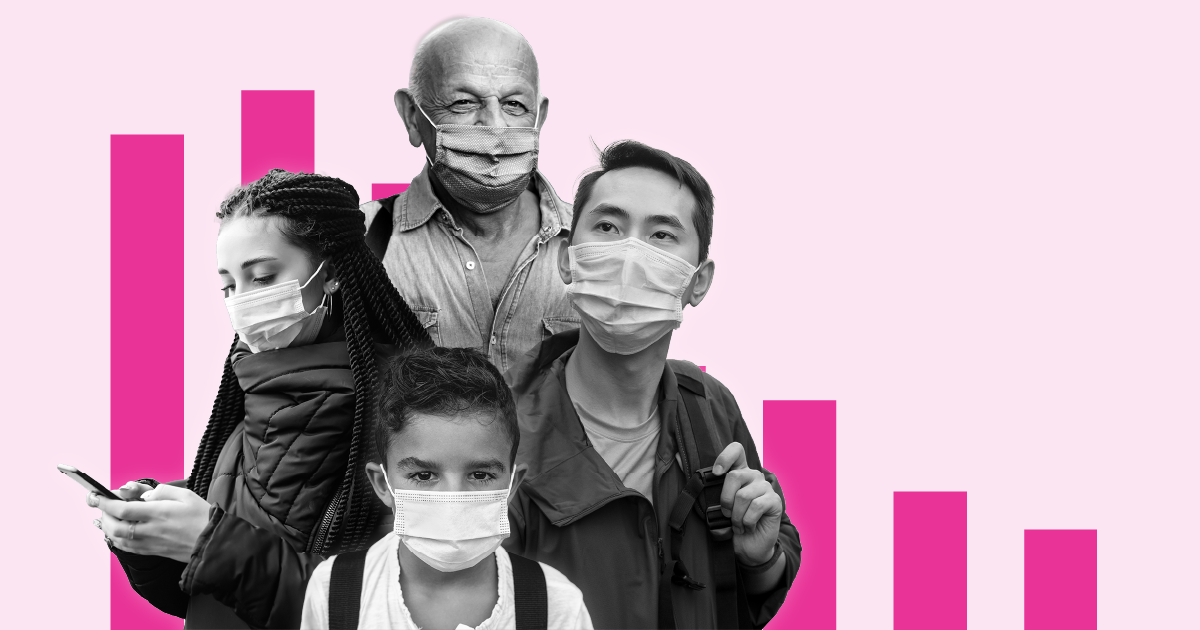Health
What health conditions make people more vulnerable to COVID-19?

The US recorded over 28 million coronavirus cases and more than 500,000 deaths from the start of the pandemic to the end of February. About 2.3 million new cases, or 83,600 per day, were confirmed in February, down from 6.1 million, or 196,900 per day, in January.
Cases declined in every state between January and February. California, which had 998,000 new cases in January, had 232,200 new cases in February — a 77% drop. Vermont had the smallest decline, with 29% fewer new cases in February (3,200) than January (4,600).
Monthly cases per 100,000 residents
Health workers gave 61.2 million doses of the COVID-19 vaccine between January 20 — when Joe Biden became president — and March 1. That pace is enough to beat his initial goal of 100 million shots during his first 100 days in office and would fall just shy of his revised goal of 150 million shots.
The pace may accelerate with the approval of a third vaccine from Johnson & Johnson. Unlike the first two vaccines from Pfizer/BioNTech and Moderna, which require two shots to be effective, the Johnson & Johnson vaccine requires just one shot. The Johnson & Johnson vaccine also does not need to be stored at cold temperatures like the other two. The pharmaceutical company aims to vaccinate 20 million people by the end of March.
As of March 3, at least 52.9 million Americans or about 16% of the population have received at least one dose of the Pfizer/BioNTech or Moderna vaccines. Overall, 27 million, or just under 8% of Americans, have been fully vaccinated. Alaska leads all states with 14% of its population fully vaccinated, while Utah ranks last with 6% of its population fully vaccinated.
This disparity can partly be explained by distribution of vaccines. The federal government’s initial allocation of vaccines was based on a state’s 18-and-over population. (The Moderna and Johnson & Johnson vaccines were only approved for adult use, while the Pfizer/BionNTech vaccine was approved for those 16 and older.) Utah has a smaller proportion of adults in its population, and therefore is being allocated fewer vaccines. Weekly state allocations will evolve based on the number of vaccines manufactured.
Additionally, the federal government allocates vaccines to the Indian Health Service (IHS), Bureau of Prisons, and the Veterans Health Administration to vaccinate relevant people served by those agencies. That data is not usually combined with state-level data. In the case of Alaska, native populations chose to be vaccinated by the state, which received the allotment that would otherwise go to IHS.
Percentage of population with both doses.
Still, not all states have been equally efficient in using their vaccine allocations. Together, states have administered 75% of the 107 million doses delivered nationwide. North Dakota and New Mexico have both used about 90% of their delivered doses. The states have fully vaccinated 11% and 12% of their populations, respectively. On the other end, Kansas has used 64% of its deliveries, while fully vaccinating 8% of its population.
During the week ending December 20, 2020, nursing homes throughout the US confirmed 34,296 COVID-19 cases, the most since at least May. Cases during the week of February 21 fell to 2,262, 94% lower than December. (The data may be revised in the coming weeks.)
The vaccination effort has prioritized older Americans. As of March 3, 13.4 million people aged 75 and older, or 60% of everyone in the age group, have received at least a single vaccine dose. Additionally, 6.8 million, or 30% of the age group, have been fully vaccinated.
The Centers for Disease Control and Prevention estimate there are about 3 million residents of nursing homes and other long-term care facilities. By the end of February, just over 2 million of them had received at least the first dose of a vaccine.
With Congress considering a $1.9 billion economic relief package that would include $1,400 stimulus checks for most taxpayers, it’s worth looking at what Americans did with their last stimulus check. In December, Congress approved a $900 billion coronavirus relief package that included a second pandemic-related stimulus payment. The checks provided $600 for any taxpayer who earned less than $75,000, and each child claimed as a dependent added $600 to the final check.
In the latest Household Pulse Survey from the Census Bureau, just over half of all adults said they live in households where someone received a stimulus payment within the previous week. Of those adults, 52% said the stimulus payment was mostly used to pay off debt, while 21% saved the money.
Stimulus usage differed based on demographics. About 62% of both Hispanic and non-Hispanic Black recipients primarily used the money for paying down debt compared with 42% of Asian and 46% of white recipients.
The survey also asked what categories of spending, debt-paying, or saving any part of the stimulus checks were used for. Fifty-seven percent of respondents said at least part of the checks were used for food, while 44% said part or all of the check would be used to pay for utilities.
To learn more about COVID-19 vaccinations, visit the vaccine tracker.
Health
Health
Health
Health
Newsletter
Keep up with the latest data and most popular content.


